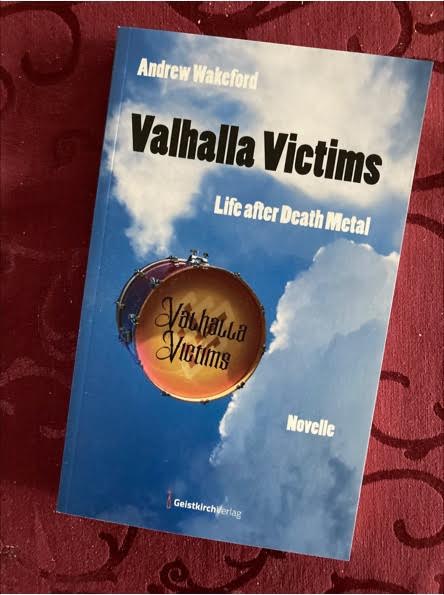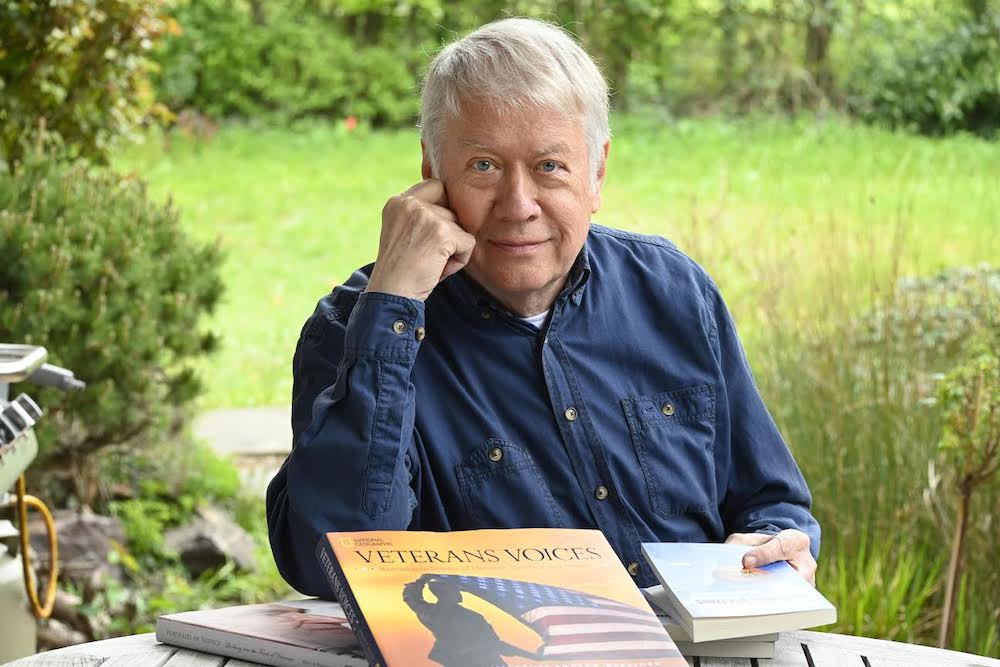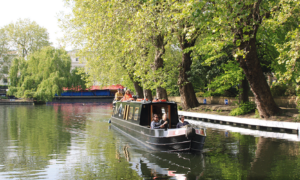(Editor’s note: This is the first of two posts about becoming an expat author. Coming up next – how to get someone to finance your print run and what to do when looking for the best publisher for your book.)

We get some of your best ideas during down time. You know, in the shower, driving the car: during those solitary meditative moments when you can hang out with just yourself and the muse. Which is exactly what happened to British expat author Andrew Wakeford, when he came up with the concept for his latest novel, “Valhalla Victims: Life after Death Metal.”
One random day, Andrew – who lives in Saarbrücken on the Germany/France border – was stuck in traffic, whiling away the time by mindfully meditating on his surroundings. One visual prompted a memory association, and before he knew it he had an idea for a work of fiction. Hey, wait … don’t you do that all the time? The difference is, Andrew has the finished product in his hand.
So, what’s his secret? How did he get from a random muse to publication?
Did he set a schedule to write every day?
What about writer’s block?
Did he take any courses to motivate himself?
What about writer’s block?
Did he ever want to give up?
What about writer’s block?
Andrew says the story suggested itself and it was pretty easy to write. It’s a fun ride involving a drummer who communicates to friends and family from the afterlife via smart phone technology. Some of it’s based on his time in London in the 1960s. Other influences came through interesting experiences. Fascinating is a better word, actually.

Wakeford has a way of telling you about his life as if it were just an accident:
I was in Normandy for the 65th anniversary of D-Day. I was volunteering for General George S. Patton’s granddaughter, Helen, who was scheduled to meet Tom Hanks. My future co-author Robert Miller was also there to meet Barack Obama. I didn’t get to meet anyone since I was stuck in the crowd.
Be interesting
OK, criterion number one – be interesting.
But, that still does not get a book written.
Here’s the kicker: Wakeford didn’t even do most of the stuff he writes about. Like, he doesn’t play drums; his son does. His interests in the spirit lead him to author Ulrich Warnke, a PhD in biomedicine who has written about the hierarchy of the spirit combining quantum physics and philosophy. Wakeford’s done some lucid dreaming but relied more on vicarious experience. He acquired some of his information via correspondence with a death row inmate who shared profound insight on the subject.
Criterion number two: Be interesting and meet interesting people.
That way you can pick their brains. But you have to meet the right interesting people. I read once that millionaires spend most of their free time networking. Maybe that concept could apply to successful entrepreneurs too.
If you want to get your name out there, you can’t spend your time sitting in front of the television expecting it to happen.
But how did he make all these connections? Volunteering, letter writing and socializing, Wakeford says. His first book, “Portraits of Service,” is about soldiers, war and the peacemaking process. He wrote letters to Bishop Tutu, Jimmy Carter and Prince Andrew, to name a few. And got a response from each one.
Other folks he communicated with were more like us and many ended up being featured in his work.
Criterion No. 3: Be interesting AND search out other interesting people and find a way to involve them in your book publishing endeavors.
Wakeford’s and Miller’s second book, “Veterans Voices,” was published by National Geographic. Both books were printed the traditional way: a large run printed in advance, then stored, sold and shipped to customers. Both were picked up by outside publishers: “Portraits of Service” by Patton Publishing and “Veterans Voices” by National Geographic.
In both cases, private individuals or sponsors covered the printing costs.
Even so, book publishing is risky business and making a profit is a long shot. Wakeford says if publishing houses are impressed with your work, they will consider it for an award. They may even submit your book to competitions such as the Independent Publisher’s Book Award, for which Wakeford and Miller won a gold medal
It’s not about the money
OK, criterion No. 4: be interesting: make friends and get them to help you publish books but don’t expect to make any money doing it – even if it is an award-winner.
For his third project, Wakeford decided to try a print-on-demand service, or PoD. Typically, a client signs up for an account, uploads and designs the book. It is usually linked to Amazon where a copy is printed upon purchase. Just go to Amazon and type in Wakeford’s name, click and buy, et voilà!
Wakeford says the print quality is good and it is an absolutely brilliant service. Here is the best part: it costs less than 20 euros to set up. Although selling, packaging and mailing are handled pretty well, Wakeford says the marketing aspect is lacking. So, he is researching publishing houses in the United Kingdom. He says one can easily delete their PoD account with no obligation since the publisher has not financed a print run.
OK, the aggregate advice for publishing your book.
Be interesting and make friends. Decide how you want to publish your books. Don’t expect to make any money doing it; just do it to entertain the muse, which is exactly why Wakeford wrote his book in the first place. Oh, and Wakeford says you have to set a deadline if you want to avoid pitfalls such as writer’s block.
About Andrew Wakeford:

Andrew Wakeford is a professional photographer and writer. His latest book “Vahalla Victims: Life After Death Metal,” is set in Brighton where Wakeford spent his childhood. Valhalla is the enormous hall ruled by a Norse king, a mythology place cited as early as the 13th century. The term has become synonymous with the concept of a gathering place for the chosen dead. The myth entered pop culture and has been the source of inspiration for artists and writers.
Wakeford spent his early career working for advertising, media and photo service agencies as well as traveling around Europe to earn personal and professional experience. He joined the Patton Sustainable Trust in 2008 where he published his first hardback photo book in artistic Black and White, Portraits of Service with co-author Robert Miller. He and Miller proceeded to publish “Veterans Voices” in full color with National Geographic.
Wakeford is currently working on “Inner Space,” a photo project.

About the author:
Alice Verberne is a freelance artist and writer who holds a degree in fine arts.
At the moment, Alice is an independent journalist with more than 25 years of experience writing for magazines and newspapers in Europe and the United States.
See all of Alice’s posts here.
See her posts about wine here.
See more about France on Dispatches here.
Alice Verberne is a contributing writer for Dispatches Europe. She has worked in print journalism and magazine production in the United States and Europe throughout her career. She currently resides in France where she enjoys visiting former French speaking colonies and discussing history with the locals.















